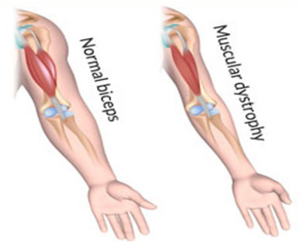 Joint pain can be caused by injury or disease of the joint or adjacent tissues. A joint is the area at which two bone ends meet to provide motion to a body part. A typical joint is composed of bones that are separated by cartilage that serves as cushioning pad for the adjacent bones.
Ligaments attach bone to bone around the joint. Bursae are fluid-filled sacs that provide a gliding surface for adjacent tendons.Tendons attach muscle to bone around the joint. Injury or disease to any of the structures of the joint can lead to pain in the joint.
Joint pain is also referred to as arthralgia. Joint pain can be caused by injury or disease affecting any of the ligaments, bursae, or tendons surrounding the joint. Injury or disease can also affect the ligaments, cartilage, and bones within the joint, leading to a painful joint. Pain is also a feature of joint inflammation (arthritis) and infection and can be a feature of rare tumors of the joint.
Joint pain can be caused by injury or disease of the joint or adjacent tissues. A joint is the area at which two bone ends meet to provide motion to a body part. A typical joint is composed of bones that are separated by cartilage that serves as cushioning pad for the adjacent bones.
Ligaments attach bone to bone around the joint. Bursae are fluid-filled sacs that provide a gliding surface for adjacent tendons.Tendons attach muscle to bone around the joint. Injury or disease to any of the structures of the joint can lead to pain in the joint.
Joint pain is also referred to as arthralgia. Joint pain can be caused by injury or disease affecting any of the ligaments, bursae, or tendons surrounding the joint. Injury or disease can also affect the ligaments, cartilage, and bones within the joint, leading to a painful joint. Pain is also a feature of joint inflammation (arthritis) and infection and can be a feature of rare tumors of the joint.
The treatment of joint pain is directed toward the precise underlying cause. If the problem is an injury, the initial treatment often includes rest, coldapplications, and antiinflammatory medications. Additional medications for pain control may or may not be required. Gradual rehabilitation physical therapy may be needed.
If there is a form of arthritis causing the joint pain, antiinflammatory medications may be recommended, followed by other medications directed at the cause of the arthritis. If there is disease of the bone, ligament, or cartilage, surgical operation may be required.

ORTHOCARE
Herbal cure clinic is a leading provider of noninvasive medical solutions focused on bone, joint and soft-tissue conditions. Services include in-home patient fitting of braces and medical devices, technology-enabled compliance monitoring patient care.
 Muscular dystrophy is a group of over 30 conditions that lead to muscle weakness and degeneration. As the condition progresses, it becomes harder to move. In some cases, it can affect breathing and heart function, leading to life-threatening complications.
Depending on the type and severity, the effects can be mild, progressing slowly over a normal lifespan, there may be moderate disability, or it can be fatal.
Muscular dystrophy is a group of over 30 conditions that lead to muscle weakness and degeneration. As the condition progresses, it becomes harder to move. In some cases, it can affect breathing and heart function, leading to life-threatening complications.
Depending on the type and severity, the effects can be mild, progressing slowly over a normal lifespan, there may be moderate disability, or it can be fatal.
There is currently no way to prevent or reverse muscular dystrophy, but different kinds of therapy and drug treatment can improve a person's quality of life and delay the progression of symptoms.
Below are the symptoms of Duchenne muscular dystrophy, the most common form of the disease.
The symptoms of Becker muscular dystrophy are similar but tend start in the mid-twenties or later, are milder, and progress more slowly.
Early symptoms include:
- a waddling gait
- pain and stiffness in the muscles
- difficulty with running and jumping
- walking on toes
- difficulty sitting up or standing
- learning disabilities, such as developing speech later than usual
- frequent falls
As time goes on, the following become more likely:
- inability to walk
- a shortening of muscles and tendons, further limiting movement
- breathing problems can become so severe that assisted breathing is necessary
- curvature of the spine can be caused if muscles are not strong enough to support its structure
- the muscles of the heart can be weakened, leading to cardiac problems
- difficulty swallowing, with a risk of aspiration pneumonia. A feeding tube is sometimes necessary.
Physical therapy
- General exercises: A range of motion and stretching exercises can help combat the inevitable inward movement of the limbs as muscles and tendons shorten. Limbs tend to become fixed in position, and these types of activities can help keep them mobile for longer. Standard low-impact aerobic exercises such as walking and swimming can also help slow the disease's progression.
- Breathing assistance: As the muscles used for breathing become weaker, it may be necessary to use devices to help improve oxygen delivery through the night. In the most severe cases, a patient may need to use a ventilator to breathe on their behalf.
- Mobility aids: Canes, wheelchairs, and walkers can help the person stay mobile.
- Braces: These keep muscles and tendons stretched and help slow their shortening. They also give added support to the user when moving.






